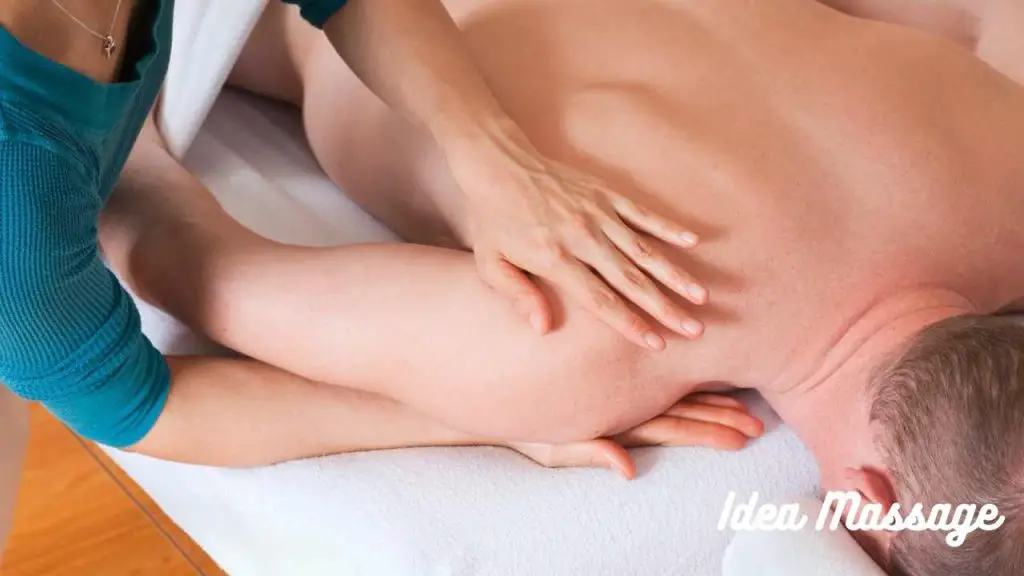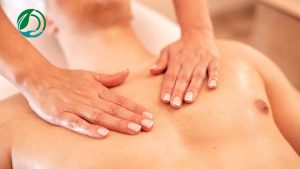
Massage therapy has become a common treatment for various health conditions. However, some side effects of massage therapy aren’t well known. What are they?
Massage therapy is a form of bodywork that involves the manipulation of muscles and soft tissues using hands or other tools. There are several types of massage therapies, such as Swedish massage, deep tissue massage, sports massage, reflexology, etc.
The benefits of massage therapy have been widely studied in recent years. It’s been shown to relieve stress, lower blood pressure, reduce pain, improve sleep quality, increase energy levels, and even help with weight loss.
However, there can be some negative side effects associated with massage therapy. Some people may experience headaches, nausea, dizziness, muscle soreness, and/or fatigue after receiving a massage.

Here are some side effects of Massage Therapy
Although massage therapy is a healthy practice and has multiple benefits, it also has some side effects too. Some major side effects of massage therapy are discussed below.
1) Headaches

Headaches are one of the most commonly reported side effects of massage therapy. These symptoms usually occur within 30 minutes to two hours after receiving a massage. The headache may feel like a dull ache, throbbing pain, or sharp stabbing sensation. Most people will experience milder headaches than this. In rare cases, people may develop more severe headaches. If you’re experiencing any type of headache, stop your session immediately and seek medical attention if necessary.
2) Nausea

Nausea is another common side effect of massage therapy. This feeling often occurs when someone receives a full-body massage. People who have experienced massage therapy before may also notice an increased level of nausea during their next massage session. You should avoid getting massages if you’ve recently eaten or drank anything that might make you nauseous.
3) Muscle Soreness

Muscle soreness is another common side effect of massage therapy. This feeling typically starts about 15 minutes after the massage and lasts anywhere from 1 hour to 2 days. It’s best to take it easy for at least 24 hours after receiving a massage, especially if you’ve received a deep tissue massage.
4) Fatigue

Fatigue is another common side effect following massage therapy. This feeling generally begins around 20 minutes after the massage and continues until 2 hours later. It’s important to rest between sessions so that you don’t get too tired.
5) Dizziness

Dizziness is another common side effect after receiving a massage. It tends to happen right after the massage, but it can last up to 10 minutes. It’s important to drink plenty of water while taking a shower after a massage session.
6) Other Side Effects
Other possible side effects include fever, vomiting, diarrhea, skin irritation, backache, neck stiffness, chest tightness, leg cramps, numbness, tingling, and joint pain.
Massage therapy has many proven health benefits, but it’s not without risks. If you’re considering massage therapy, talk to your doctor first to find out what precautions you need to take.

Benefits of Massage Therapy
The benefits of massage therapy have long been recognized by both doctors and patients. Here are just a few of the reasons why you should consider getting regular massage therapy:
1. Reduces Stress
Stress is a major cause of illness and disease. Research shows that massage therapy reduces stress, which helps prevent heart attacks, strokes, high blood pressure, diabetes, depression, anxiety disorders, arthritis, cancer, and other illnesses.
2. Improves Blood Circulation
Blood circulation is vital to good health. Studies show that massage increases blood flow throughout the body, including to the brain. This improves the oxygenation of tissues and stimulates the immune system.
3. Relieves Pain
Massage therapy relieves muscle tension and restores normal function in muscles. When used regularly, massage therapy can help reduce chronic pain caused by injuries, arthritis, fibromyalgia, and other conditions.
4. Enhances Relaxation
Research shows that massage therapy promotes relaxation. Regular massage therapy helps relieve anxiety and stress, which makes it easier to sleep better and improve overall well-being.
5. Promotes Healing
Studies show that massage therapy speeds healing and recovery time after surgery, injury, and illness. It also helps reduce scarring and bruising.
6. Increases Immunity
Regular massage therapy boosts immunity, making people less likely to catch colds and flu. It also helps keep the lymphatic system functioning properly, which prevents infections.
7. Boosts Energy Levels
A study published in The Journal of Alternative & Complementary Medicine found that women who got weekly massage treatments had higher energy levels than those who didn’t receive massage.
8. Helps with Weight Loss
According to research from the University of Maryland Medical Center, massage therapy may be an effective way to lose weight. A study showed that obese women who received massage for 12 weeks lost more weight than those who did stretching exercises or watched television.
9. Helps Treat Depression
In one study, researchers at the University of Miami School of Medicine found that massage therapy improved mood and reduced feelings of depression among elderly patients suffering from dementia.
10. Treats Arthritis
In another study, researchers at the National College of Natural Therapies found that massage therapy helped ease symptoms of arthritis. They concluded that “massage therapy appears to be beneficial as part of a comprehensive treatment program.”

Disadvantages Of Body Massage
Although there are many positive aspects of massage therapy, there are some potential disadvantages too. These include:
It Might Not Be Safe For Everyone
Some people might experience negative side effects when receiving massage therapy. Some possible reactions include:
1. Allergies
If you’ve ever experienced an allergic reaction to someone else’s hands, then you know how uncomfortable it can feel. In fact, allergies to touch have been known to occur since ancient times. You’re most likely to develop an allergy if you get regular massages. However, this doesn’t mean you shouldn’t try massage therapy if you think you might be allergic to your therapist’s hands. Ask your doctor about alternative ways to treat your condition.
2. Soreness
Sores on the skin can result from the overuse of certain parts of the body. If you notice any sores while getting massage therapy, tell your therapist immediately so he/she can stop working on that area until they heal.
3. Rashes
Rashes are usually temporary and disappear within 24 hours. But if you see red spots, blisters, or bumps on your skin after receiving massage therapy, contact your health care provider right away. He/She will need to examine you to determine what caused the rash.
4. Muscle Cramps
Massaging muscles can cause them to cramp up. This is especially true if you don’t stretch before each session. Make sure you do a few stretches before you begin massage therapy.
5. Painful Or Sensitive Areas
Certain areas of the body tend to become sensitive during pregnancy, due to allergies or due to injury. When these areas are massaged, you could feel discomfort or pain. Tell your massage therapist if you notice any unusual sensations.
6. Other Discomforts
Your comfort level is very important when choosing a massage therapist. If you feel like something isn’t quite right, ask your massage therapist to adjust his/her technique. He/she should be able to help.
What is the most frequent adverse effect of massage therapy?
According to the American Massage Therapy Association (AMTA), the most common side effect of massage therapy is soreness. Other less common side effects include muscle spasms, bruising, swelling, Dry Skin, Skin Rash, Redness, Stiffness, Swollen Joints, and stiffness.
What happens to your body after a massage
When you receive a message, your blood flow increases, which helps your muscles relax. As a result, your body releases endorphins, which make you feel more relaxed. Your heart rate also slows down. The combination of all these factors makes you feel better than you did before you received the message.
How often should I get a massage?
The AMTA recommends that adults receive two to three sessions per week for maintenance purposes.

Tips For Good Massage Therapy
The best way to avoid injury is by using proper techniques and following safety precautions. Here are some tips to keep in mind:
1. Be Aware Of Your Body
Before beginning massage therapy, check yourself thoroughly for cuts, bruises, sprains, etc. Also, look at your feet and legs to ensure that nothing is hidden under clothing.
2. Use Proper Techniques
Don’t use excessive force when applying pressure. For example, don’t squeeze too hard or hold your breath when kneading muscles. Instead, gently move your fingers back and forth, press firmly with your thumbs, and roll your palms together.
3. Wear Appropriate Clothing
Wear loose-fitting clothes that allow you freedom of movement. Avoid tight clothing, such as jeans and tights. They may restrict circulation, causing numbness or other problems.
4. Protect Yourself From Injury
If you have arthritis or another condition that limits your range of motion, wear shoes with good arch support. Don’t place pillows between your knees or ankles. These positions can limit blood flow and lead to injury.
5. Avoid Excessive Heat
Never use hot stones or heated towels on your skin. These methods increase the risk of burns.
6. Avoid Alcohol And Drugs
Alcohol and drugs slow reaction time and impair judgment. If you’re taking medication, discuss it with your massage therapist. You might need to take special care while receiving massage therapy.
Can a massage cause nerve damage
Massage therapy is not known to cause nerve damage. However, there’s always the possibility of an accident occurring. To reduce the chances of this happening, follow the guidelines listed above.
Can a massage hurt my baby?
Yes, but only rarely. During pregnancy, your uterus enlarges and becomes softer. This means that your cervix is likely to open wider during labour. In addition, your ligaments become looser, making delivery easier.
However, if you’ve had previous cesarean sections, you’ll be given anesthesia for the procedure. Anesthesia will prevent pain from being felt during surgery.
Is too much massage harmful
It depends on how you define “too much.” Too much exercise could be dangerous. But too much massage isn’t necessarily bad. It depends on what type of massage you’re getting.
A deep tissue massage uses firm pressure to stimulate deeper layers of muscle. Deep tissue massage can help relieve chronic conditions like arthritis.
Swedish massage focuses on relaxation through gentle strokes. It’s usually performed on one part of the body at a time.
A sports massage helps athletes recover after strenuous activities. Sports massage is often used before competition and training.
How Does Massage Work?
There are two main theories about how massage works. Both explain that massage stimulates nerves and muscles, but they differ on what happens next. One theory says that when the nervous system sends signals through the muscles, the muscles relax. Another theory says that the muscles send messages to the nervous system, telling it to relax. Either way, massage therapy has many proven benefits.
Conclusion
In conclusion, massage therapy has become increasingly popular over the past several years. While it’s true that massage therapy can provide a number of physical benefits, it’s also proven to help relieve stress and anxiety. In fact, studies show that massage therapy can actually improve your mood and reduce depression.
While these benefits are certainly impressive, the real reason that people choose to receive massage therapy is that it feels amazing. When you’re lying on a table, completely relaxed, with someone gently rubbing your muscles, it’s hard not to smile. So whether you’re looking for relief from chronic pain, relaxation after a stressful day, or just a simple treat, massage therapy is definitely worth giving a shot!






